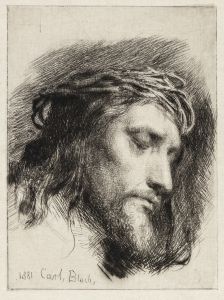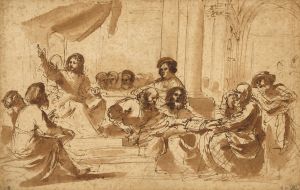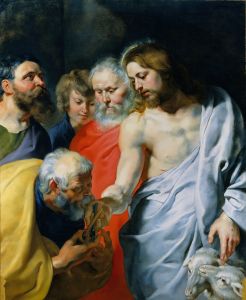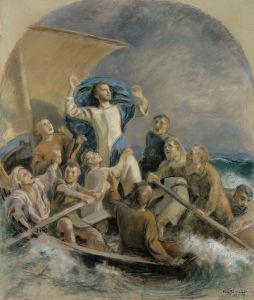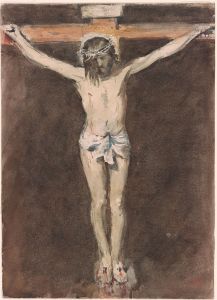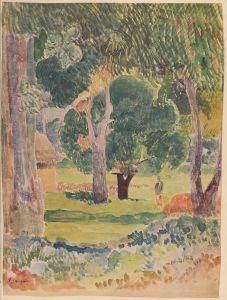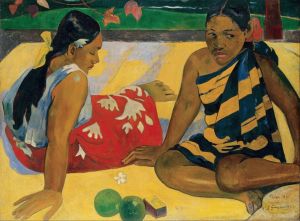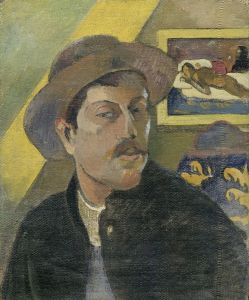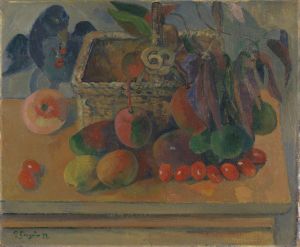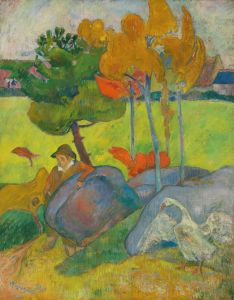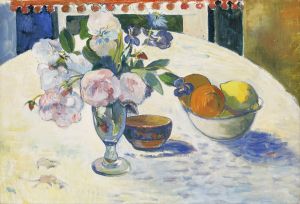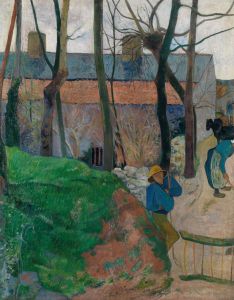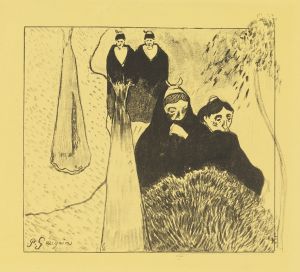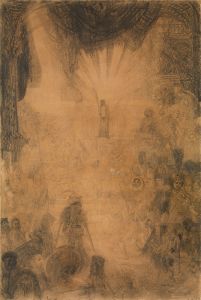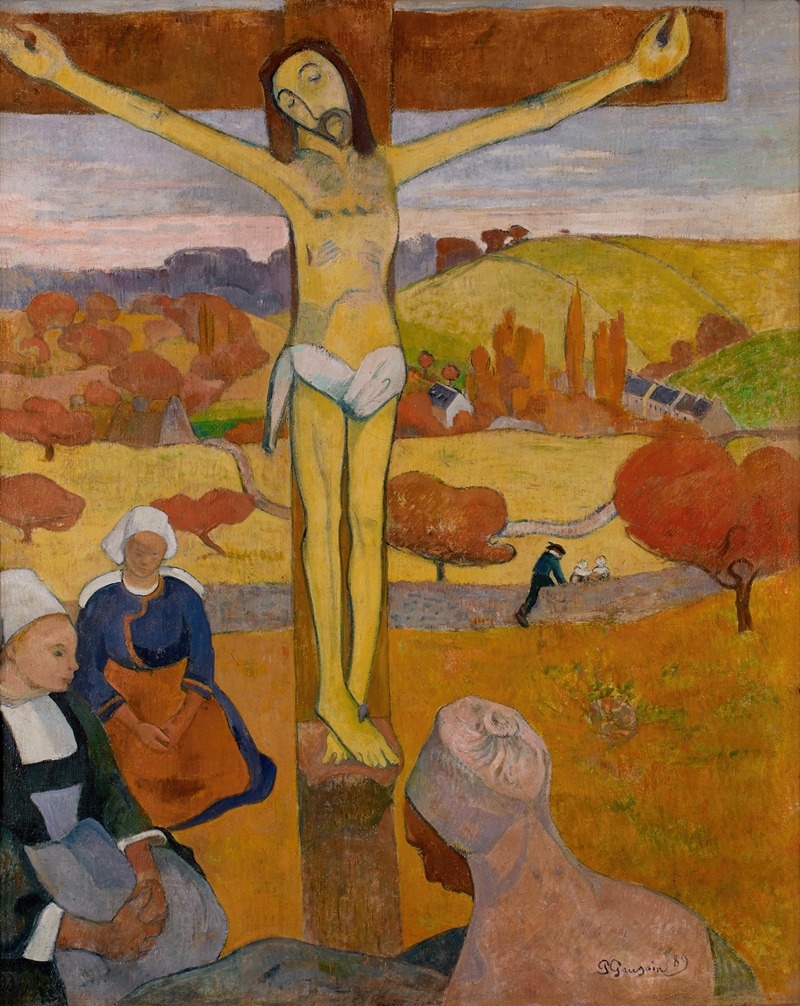
The Yellow Christ
A hand-painted replica of Paul Gauguin’s masterpiece The Yellow Christ, meticulously crafted by professional artists to capture the true essence of the original. Each piece is created with museum-quality canvas and rare mineral pigments, carefully painted by experienced artists with delicate brushstrokes and rich, layered colors to perfectly recreate the texture of the original artwork. Unlike machine-printed reproductions, this hand-painted version brings the painting to life, infused with the artist’s emotions and skill in every stroke. Whether for personal collection or home decoration, it instantly elevates the artistic atmosphere of any space.
The Yellow Christ is an iconic oil painting created by French Post-Impressionist artist Paul Gauguin in 1889. The artwork is widely regarded as one of Gauguin's most significant religious works and a key example of his innovative use of color and symbolism. It is currently housed in the Albright-Knox Art Gallery in Buffalo, New York.
The painting depicts the crucifixion of Christ, but Gauguin reimagines the scene in a rural Breton setting, rather than the traditional biblical landscape. Christ is portrayed in a striking yellow hue, which dominates the composition and lends the work its title. This bold use of color reflects Gauguin's interest in symbolism and his departure from naturalistic representation. The yellow tone of Christ's body has been interpreted as a means of emphasizing spirituality and otherworldliness, while also connecting the figure to the autumnal landscape in the background.
In The Yellow Christ, Gauguin incorporates elements of the Breton culture that fascinated him during his time in Pont-Aven, a small village in Brittany, France. The women depicted in the foreground, dressed in traditional Breton attire, are shown in prayer, reinforcing the religious theme of the painting. Their presence also serves to anchor the scene in the everyday life of rural Brittany, blending the sacred with the secular.
The composition of the painting is notable for its simplicity and flatness, characteristics influenced by Gauguin's interest in Japanese prints and his desire to move away from the naturalistic techniques of Impressionism. The flattened forms, bold outlines, and vibrant colors exemplify Gauguin's distinctive style, which would later influence the development of modern art movements such as Symbolism and Expressionism.
Gauguin painted The Yellow Christ during a period of personal and artistic exploration. He had moved to Brittany in search of a simpler, more "primitive" way of life, which he believed was reflected in the region's landscapes and culture. This painting, along with its companion piece The Green Christ, demonstrates Gauguin's engagement with religious themes and his effort to reinterpret them through his unique artistic vision.
The Yellow Christ remains a celebrated work in Gauguin's oeuvre and a significant example of late 19th-century art. Its innovative use of color, symbolism, and cultural references continues to be studied and admired by art historians and enthusiasts alike.





